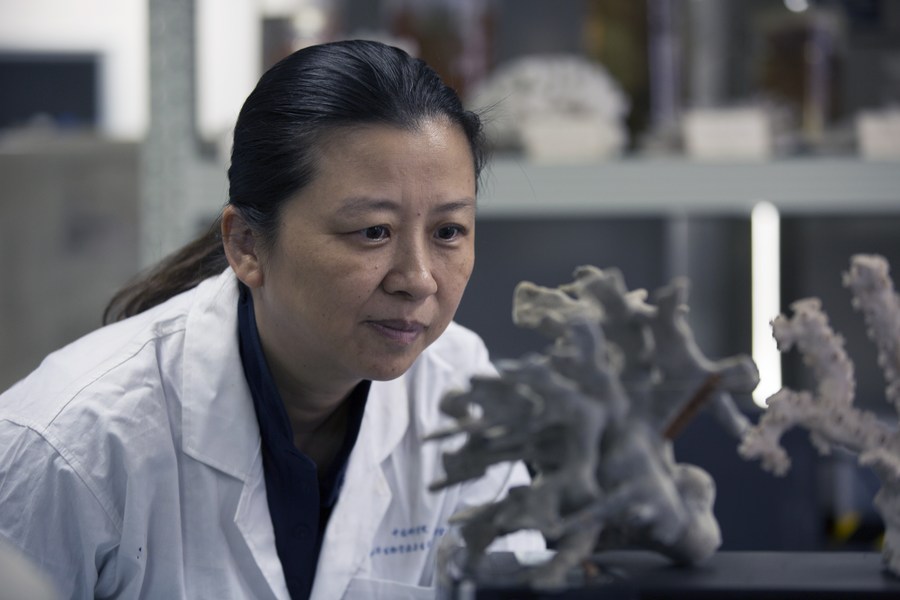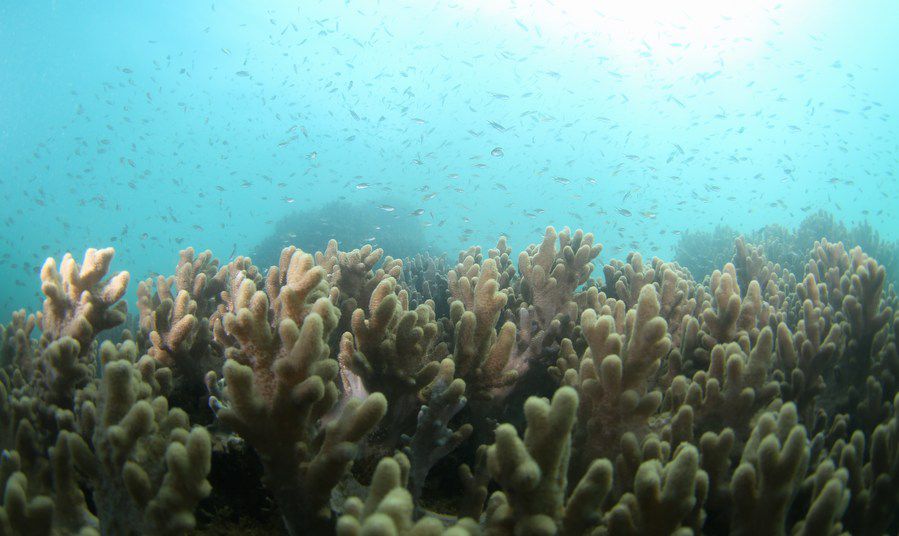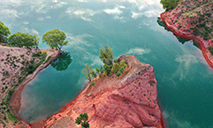Chinese scientists plant corals to restore seabed ecology
-- In the past 30 years, China has lost over 80 percent of its coral reefs, and in the South China Sea, the coral coverage on the seabed has plunged from some 60 percent to around 20 percent.
-- 20 years on, Chinese coral biologist Huang Hui together with her team has been making continuous efforts to preserve corals and protect ocean ecosystems.
-- Since 2009, Huang and her team have planted 120,000 to 150,000 corals, covering over 200,000 square meters of seabed of the South China Sea.
GUANGZHOU, Aug. 11 (Xinhua) -- Chinese coral biologist Huang Hui has devoted half her life to recreating the spectacular scene in her memory: vast stretches of colorful corals thriving on the seabed of the South China Sea.
"It's stunning. The seabed was fully covered with colorful coral bushes, dotted with fishes and shrimps of different colors and shapes," said Huang, recalling her first sight of the scene off China's coastal city of Sanya in 2002.

Photo taken in October 2018 shows Huang Hui examining coral specimen at a laboratory in Guangzhou, south China's Guangdong Province. (Xinhua)
Huang started her career in the South China Sea Institute of Oceanology under the Chinese Academy of Science in 1993. In 1996, she joined the team of Zou Renlin, China's pioneer in coral taxonomy, to figure out the distribution of corals in China.
The experience in Sanya was the first and last time Huang saw thickets of corals, as they have become more rare in recent years.
Studies show that China has lost over 80 percent of its coral reefs in the past 30 years. In the South China Sea, the coral coverage on the seabed has plunged from some 60 percent to around 20 percent, and worldwide, the coral coverage has dropped to about 15 percent in recent decades.
"We have kept recording the area of corals in China. Sadly, it was shrinking every year," Huang said.
According to Huang, corals are fragile animals. They prefer clear, warm and good-quality waters. "Tiny fluctuations of temperature, salinity or water quality may result in death of large areas of corals," she said.

Photo taken on March 17, 2021 shows coral and a school of fish in the sea of Yazhou Bay in Sanya, south China's Hainan Province. (Xinhua/Yang Guanyu)
Corals have important geological and ecological values. Coral reefs can help protect the seashore from erosion, and coral bushes serve as habitats for small fishes, shrimps and shellfishes.
To help the coral community recover, Huang decided to plant corals under the sea. In 2009, she organized a team in south China's Hainan Province, which administers Sanya.
Huang and her team first bred "coral seedlings" in a nursery, and then transplanted them to the seabed. Different types of corals were chosen according to the various seabed conditions.
"We use glue and steel frames to tie corals onto the seabed. We need to remove rocks and level the seabed before planting corals," Huang said.
However, growing corals on the seafloor is not an easy job. Weather conditions are one of the most major variables that influence coral planting.
According to Huang, the ideal diving conditions are when the wave height is less than one meter. Wave heights of 2 meters or more can be dangerous, because the divers find moving around underwater difficult and the small diving boat can easily be blown away.

Undated photo shows Huang Hui and her colleague studying coral reef ecosystem in the South China Sea. (Xinhua)
Sea-sickness is another great challenge.
"The journey to a coral plantation area usually takes four days, but it took six days last time because of the strong wind. I just lay in the bed and moved up and down with the boat, which made me feel sick," she said.
Typhoons and tropical cyclones are frequent visitors to the South China Sea. Huang and her team only have a narrow time-slot for underwater work each year.
"If the weather permits, we make the most of the time available," Huang said. A bottle of oxygen allows about 30 minutes of diving, during which time a diver can only plant a few coral bushes.
Despite the challenges, their efforts have paid off. Since 2009, Huang and her team have planted 120,000 to 150,000 corals, covering over 200,000 square meters of seabed of the South China Sea.

Photo taken on March 18, 2021 shows coral in the sea of Yazhou Bay in Sanya, south China's Hainan Province. (Xinhua/Yang Guanyu)
Yet, she considers this result to be only "a drop in the ocean."
"The underwater ecosystem needs time to recover. Planting corals is only the first step in restoring the underwater ecology. We need time to plant more," said Huang. "Hopefully, the corals will gradually become a forest, and the fish and shrimp will come back."
Now in her 50s, Huang is still repairing corals in an experimental area. She said her biggest dream is to see a mass of corals on the seabed of Sanya again.
"Coral planting is our lifelong goal. I feel happy to see seabed ecology is getting better thanks to our work," she said.
Photos
Related Stories
Copyright © 2021 People's Daily Online. All Rights Reserved.










